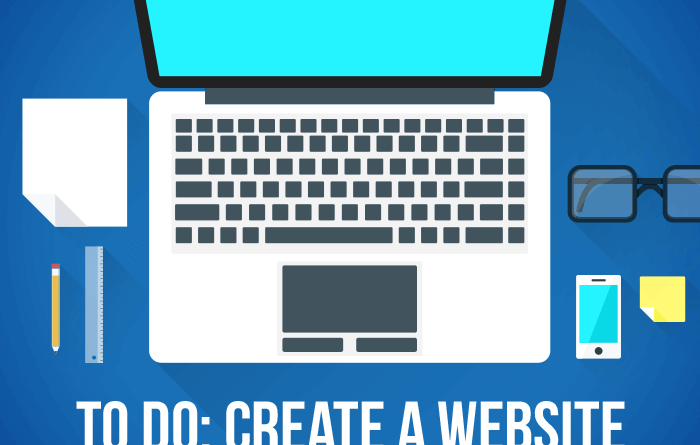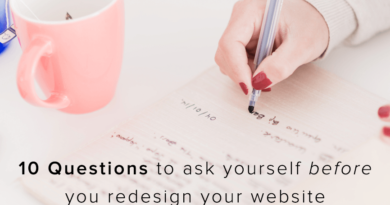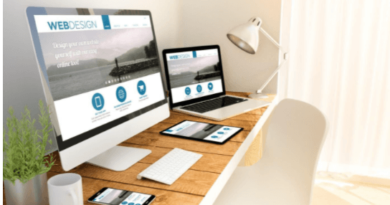How to have a site layout ready in 10 steps
The site layout is like a business card for your company. Through it, you can motivate the potential customer to take an interest in your products or services and make sure they have a good experience on your page. To achieve this, there is a step by step that you must follow.
Some people believe that being present in a virtual environment is a guarantee of success. However, as you already know, this way of thinking is very far from reality and affects the entire Marketing strategy of a company, even the layout of a website .
In this way, it is important to think about details that have the power to make a difference before the attentive gaze of your target audience and can, in effect, enhance the presence of your brand in the market .
In this sense, the site layout plays a very important role, because it works as a business card for your company.
Therefore, you need to make a website design that is attractive and has the power to lead the customer to stay longer on your page, ensuring the consumer, in this way, a good experience with your brand.
But how to do it and get good results? Check out the 10 steps you need to take to create a fantastic site layout right now !
10 steps for site layout
Table of Contents
Check out our step by step to learn how to develop a good website design below!
1. Choose a good hosting provider
The hosting service can interfere – a lot! – in the quality of your website. For this reason, it is essential that, before worrying about the appearance of the website, you choose a provider that offers a quality service.
In this situation, beyond considering the price of accommodation, it is essential that you keep in mind other details that will make a difference, such as:
- Compatibility with the platform you plan to use;
- quality of support offered;
- speed performance;
- existence of research materials that contribute to finding the solution for possible problems;
- additional resources of the hosting can facilitate your day to day;
- perform daily backups .
2. Define the authoring platform
Building a website from scratch can be very expensive. For this reason, it is necessary to have the creative platforms available in the market, since they will help in the development of a website that has quality and is responsive, without major difficulties.
There are CMS platforms – Content Management System – which are content management systems and are presented as excellent tools thus facilitating the creative process.
Indeed, one of the most popular platforms is WordPress . More than 30% of the pages on the Internet use this tool because it is easy to use, it has incredible theme options and it gives you the ability to customize the design of your website.
3. Make an outline
After following the steps above, you must define what will be the characteristics and appearance of your site. This step can be done by hand using a pencil and paper or with the help of website template creation tools that can be installed on your computer.
The important thing is to create your outline making sure that it has all the elements that you think are important on your website. Whenever necessary, review what you have done so that the sketch and, later, the final work is aligned with your brand.
4. Configure the tools
Once you’ve done that, it’s time to select the tools you need to bring your ideas to life. For that, you must:
- Install everything you need on the authoring platform;
- choose the site layout, then install and activate it;
- use tools that allow modifying what is necessary.
This will allow your prototype to work the way you want it to and be attractive to the public when it comes to putting it into practice.
5. Research your target audience
Your company’s website design should foster good communication with your target audience, which will help you focus your efforts on the consumer experience.
When creating your website design, consider the following aspects of your audience:
- Age;
- performance area in the market;
- where you live;
- predominant gender;
- what he does for fun.
Also identify other characteristics that are important to attracting the right people to your site.
How to get all this information? One tip is to use tools like Google Analytics and Facebook Insights , as they offer valuable data about your audience.
6. Pay attention to the pages
Remember that you will need to create different types of pages and that each of them must have the necessary characteristics to attract the attention of your audience.
At least 5 features deserve your full attention:
- Home – This is the home page, where you can add a short summary of your business and some photos.
- Contact: where will be the information necessary for the client to contact your company (address, telephone number and email).
- About the company: it is the space in which the values of the company are shown, a little of its history is told and the work it does is described.
- Products: show what your company offers to solve a customer’s problem.
- Blog: place where relevant content will be published that will generate value and contribute to the daily life of your audience.
7. Think about seaworthiness
Your client should navigate your pages with ease, this will keep them entertained and interested in what you have to offer.
Regardless of the device you use to access the site – be it a computer screen or a mobile device – it is important that you create a site layout that is intuitive , that is, that:
- Present all the correct information;
- keep it simple;
- be easy to use and consistent.
One tip for this is to create the quick access buttons. But, avoid putting too much information and confusing your customer.
8. Choose images and colors
Nobody likes to go to a website and have to work hard to see important details of what they want to buy, right?
So invest in high resolution images and present things at different angles . This applies both to images of your company and to those that describe the products and services you offer to the customer.
Another important aspect is the choice of colors, which can help or hinder sales. Remember that humans automatically associate colors with some feelings. Some examples are:
- Green: harmony, balance, hope and perseverance.
- Blue: security, tranquility and mental clarity.
- Red: drive, achievement, and self-esteem.
- Purple – prosperity and respect.
- Orange: movement and spontaneity.
For your site layout, choose the colors that represent your market. An important tip is to maintain harmony between them, always lighting the background of the site and using darker colors in the footers and on the sides of the pages.
Doing this with common sense will help your page look beautiful and the customer won’t tire their eyes easily.
9. Use the site layout prototype
Now is the time to place your sketch on the design platform you have selected. If you have chosen to use WordPress, use plugins to place all the elements of your website in the order in which they should appear.
In this way, texts, website categories, images and videos will already have the appropriate spaces in your website project. But, to do that, you need to know exactly what you want and where you want it. This is why sketching the design is so important.
Once your prototype is ready, you will still identify some elements that do not match the design or are not as good as you imagined.
Then you can decide what to keep or what to change. The important thing is to pay attention to the details and make your page attractive to the customer.
10. Do tests
Now that your pages are ready, it’s time to test their responsiveness or responsiveness . After all, having a crashed website can affect your sales.
To do this, test the operation of the pages by checking how they are in the mobile version and if they are adaptable to different screen sizes. This will ensure that the customer has a good experience when accessing your website.
Also, it is important to test the page loading speed . It has to be fast, since the delay can cause the public to stop accessing the site.
Most common mistakes when creating a website layout
So far, you’ve seen what it takes to have a memorable website design. However, it is important to remember that there are some things to avoid such as:
- Using many different fonts on the page, which affects customer focus;
- not choosing colors well;
- use, in the texts, very long lines and large paragraphs thus making reading difficult;
- not implement a research field;
- put a lot of information on a single page;
- build the site without knowing the customer.
As you can see, creating the site layout is important and requires attention. By putting into practice the step by step that we show you and avoiding the most common mistakes, you will be able to create a website that attracts more customers to your company.



